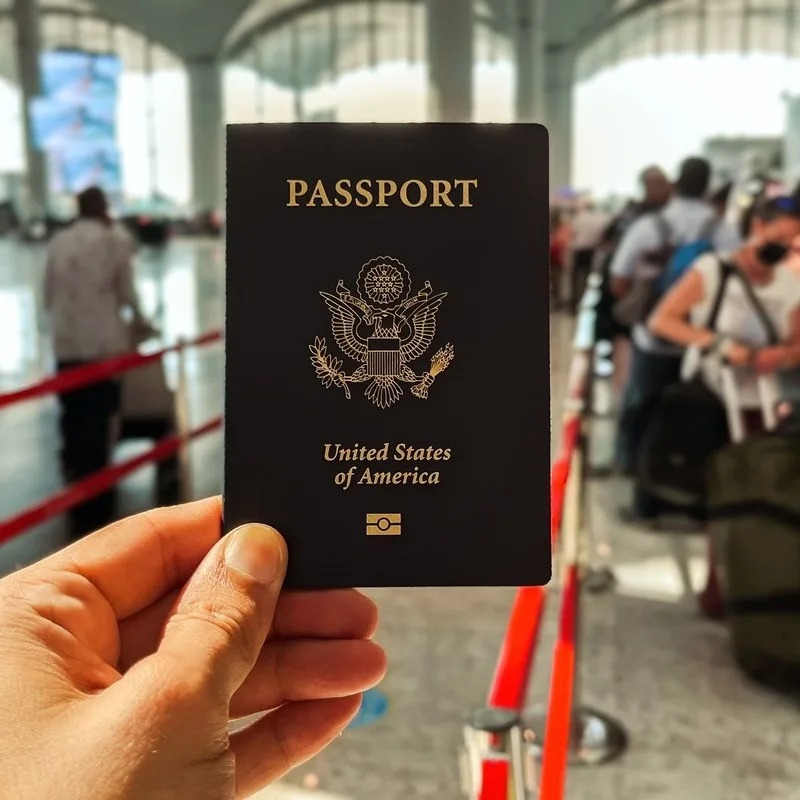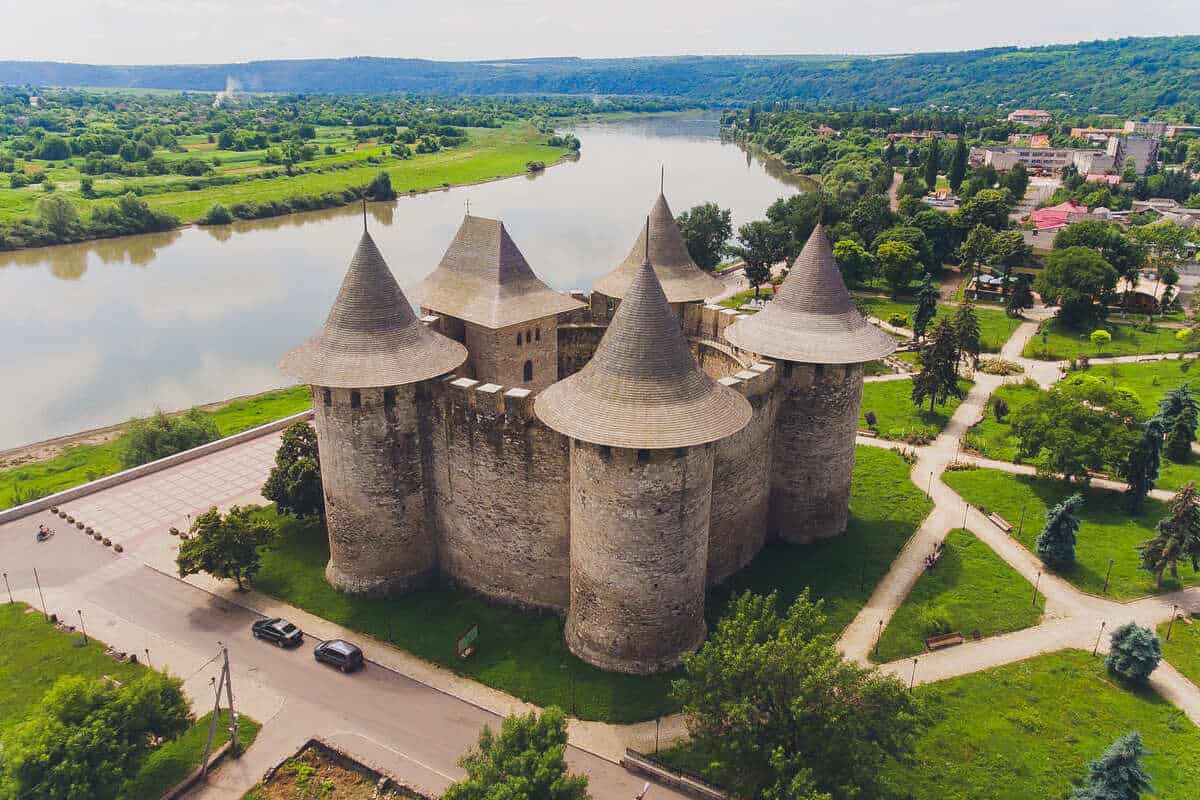Europe is the world’s tourist playground. Highly sought-after for its medieval castles, cobbled Old towns, ancient heritage, and iconic sights, it hosts tens of millions of tourists every year.
Despite the continent’s soaring popularity, especially now that all border curbs have been lifted, a majority of travelers still restrict their movement to the Western half, continuously failing to look beyond the generally safe, more developed European Union.
As it turns out, there is a lot more to Europe than just Italy’s Romanesque monuments, Spain’s sandy beaches, and Croatia’s set-jetting film locations, and if you’re looking for a true hidden gem – perhaps one of Europe’s last – then maybe you should add a stopover here this summer:
Welcome To Europe’s Least-Visited Country
Moldova is often described as Europe’s least-visited country.
Located in Eastern Europe, sandwiched between the macro-power that is the European Union and Ukraine, it has historically been overlooked due to its complex History and ties to Russia, and lower-than-average development rates, which would easily make it the region’s poorest state alongside partially-recognized Kosovo.

Taking these factors into account, which I will delve deeper into further down in the article, it doesn’t surprise me that it’s failed to assert itself as a major tourist destination, taking into account the fierce competition it faces in the Eastern bloc alone, where nations like Romania, its immediate neighbor, and sunny Bulgaria continue to lead booking trends.
That’s not to say Moldova’s lack of popularity, and inherent obscurity, translates into an absence of cultural value.
As you are about to find out, it is maybe Europe’s most criminally underrated country and certainly one of its most fascinating.

How Does Moldova Exist As A State, Anyway?
A tiny landlocked country that is only 33,846 km² long, Moldova’s History dates back to at least the 14th century when the bygone Principality of Moldavia was installed.
It existed as its own state, though with varying borders as a result of wars with other powers and territorial gains, until at least the early 19th century.
Heavily influenced by other powers in the vicinity, including Wallachia, now part of modern-day Romania, the Ottoman Empire, which dissolved to form Turkey, and of course, the Russian Empire, which it fell under the control of from the 1800s, Moldova is an amalgamation of all of these cultures.

At its core, however, it is very much an extension of Romania.
The official and the most widely-spoken language across the territory is Romanian, and Moldovans themselves are in their vast majority ethnically Romanian, though some minorities are Slavic and other ethnicities.
In total, its population is estimated at 2.5 million as of January 2023.
A majority of the populace would be concentrated in and around Chișinău, Latinized as Chisinau, the country’s capital and largest city, with a metropolitan area of nearly 800,000 residents.
As the cultural and financial center of the small country, Chisinau is easily its strongest tourist offer.

A Captivating Capital City
We’ll be honest with you.
Chisinau is not ‘European’ pretty, in the sense that you shouldn’t expect to find Instagrammable streets, a host of Art Nouveau or Baroque buildings, and great city infrastructure – but it is captivating. Think Tirana, Albania, but even edgier.
It was settled as early as 1436, though it wasn’t until the 19th century that it rose to prominence as an important town when Russia proclaimed it the capital of the newly-formed Bessarabia oblast, or province.

The development that ensued transformed Chisinau from a mere village of around 7,000 inhabitants to a rapidly-modernizing city. Its broad boulevards, imperial cityscape, and regal parks all date back to that period.
Unsurprisingly, Chisinau imported numerous traits from their Russian counterparts, from architectural features to the way of governance, and it wasn’t long until it became a traditional Soviet city upon the Soviet Union’s annexation of Moldova, then a territory within Romania.
Moldova’s recent History is closely intertwined with that of Russia as a result of the annexation and later on, the Soviet era, though it would regain independence upon the fall of the Iron Curtain three decades ago.

Visiting Chisinau, you will be met with a variety of Soviet-style apartment blocks, including the landmark Romashka Tower, the tallest structure in all of Moldova, and countless brutalist monuments.
The cityscape may look disappointingly gray at first and severely under-developed following years of imposed communist rule, but it only takes a quick stroll around the unpolished Old Town Chisinau or a visit to one of the city’s many quirky, unique cafes to realize it is brimming with potential.
The locals are friendly, and the food is delicious – a blend of ethnic Romanian dishes and world-famous Russian delicacies – and most importantly, the streets are essentially crowd-free.

Some of the most incredible sights and areas in Chisinau include:
- The Metropolitan ‘Nativity of Christ’ Church, built in the 19th century
- The Triumphal Arc – yes, Moldova has its own
- The stately National Museum of Ethnography and Natural History
- The ‘Stephen the Great’ gardens, full of scenic walking paths and romantic fountains
- The Dendrarium Park, offering visitors and locals alike an escape from the hustle and bustle of the big city and its noise pollution
- The well-kept National Botanical Garden, yet another of Chisinau’s lush-green spaces
- The Chisinau State Circus, a modernist relic of the Soviet period
- Romanita House, a seventy-seven-meter tall Soviet-era apartment block with unique arching balconies towering above a city park
- The Gates of Chisinau, one of Chisinau’s most emblematic monuments, and a set of twin building developments lining the busy Dacia Avenue

No Tourists, Lower Prices
Last year, only 29 thousand foreigners arrived in the country via tourism agencies, as reported by the National Statistics Bureau, meaning it is very much an ‘off-path’ spot awaiting discovery.
Exploring Chisinau, you will soon learn Europe does not necessarily have to be synonymous with exorbitant prices.
As Moldova is not classed as a high-income country, and the cost of living is a lot lower compared to other Eastern European countries, not to mention the Western World, it can be ridiculously cheap to travel.
If you think Romania or Bulgaria are cheap, wait until you get here.

It is particularly favored by digital nomads traveling Europe who are seeking affordable destinations to lie low for a while, as the estimated monthly costs for a single person are around 11,353.7 Moldovan leu, or only US$620.40.
Food is very affordable, with meals at inexpensive restaurants costing US$7.65, and a pint of local beer an average US$1.37.
What Else Does Moldova Offer?
- Medieval castles
- Ancient monasteries
- Beautiful nature
- Vineyards
- Dark tourism

Outside Chisinau, there are several other incredible locations you won’t find easily on travel brochures. Whether it’s imposing medieval fortresses you’re after, dark tourism, or a bit of enotourism, Moldova has got you covered.
Walking along the banks of the Dniester River, close to the remote town of Tipova, tourists will be greeted with the marvelous Tipova Monastery, carved out of rock and made up of three main complexes. These are named Church of the Feast of the Holy Cross, Church of St. Nicholas, and Horodiste.
It is one of Moldova’s main postcards, as it can accommodate up to seven hundred monks, and it’s set against the unspoiled backdrop of Moldovan nature.

If you’re looking for an easier day trip from Chisinau, you can head instead to the Cricova winery, a short 30-minute drive from the capital.
The guided visit includes entry to underground tasting rooms, the warehouses where over a million bottles of wine are stored, the gift shop, and the small museum.
Cricova is known locally as the ‘wine city’, and most of the production is extremely refined.
Are small, cobbled towns with stunning architecture your thing? In order to escape the brutalism that pervades Chisinau, head Northwest to Curchi, a traditional settlement renowned for its landmark monastery, home to at least five churches.

The town is replete with Bessarabian-era architectural treasures, and it will feel pleasant to stroll in summer when the weather is balmy and the gardens are in bloom.
Similarly to Curchi, Capriana has a famous 15th-century monastery founded by national hero Alexander the Good. It holds a special place in Moldovans’ hearts as it served as a residence for one of the very first Moldovan poets known to History, Chiprian.
Had enough of medieval attractions yet? Don’t forget to add Soroca to your list, a stone’s throw away from the Ukrainian border, as it houses a massive fortification with perfectly-preserved turrets that could well have been idealized by Walt Disney as a fairy-tale castle.

On Transnistria…
Since it regained its independence, Romania has been at loggerheads with Russia, or more specifically, Russian-backed forces over the status of Transnistria.
Comprising the Easternmost edge of Moldova’s internationally-recognized borders, Transnistria is a self-proclaimed state where a majority of the country’s ethnically-Russian people live.
Despite not having attained ‘country’ status by any international standards, it controls the self-declared ‘borders’ within which it exists, it has a separate currency, pegged to the Russian ruble, and it issues its own passports, though they are not valid for travel anywhere outside the narrow strip of land that is Transnistria.

The Transnistrian capital, Tiraspol, spelled in Romanian as Tirișpolea, would be Moldova’s second-largest city prior to the rupture. The population had reached over 133,807 as of 2015, though the updated figures could be a lot higher following mass migration from Russia and Ukraine.
Tiraspol is a quintessential Soviet city, with its wide boulevards, monuments to Lenin and other Russian revolutionaries, and Stalinist Palace of Culture.
Despite Transnistria’s complex status within Moldova, travel wasn’t strongly advised against until last year, prior to the Russian invasion of Ukraine.
Now, a majority of national governments advise against all but essential travel to Transnistria, as tensions in the region are high, and the pro-war stance of Russian separatist forces in the region can lead to civil unrest.

Moldova Is Still Safe To Travel
In spite of the Transnistrian issue and its proximity to Ukraine, Moldova remains a remarkably safe country for tourists.
It is listed by the United States as a Level 2 destination, only one level low of being considered perfectly safe, and that’s mostly to do with Transnistria than safety issues within Moldova proper.
There has been ‘no military spillover‘ into Moldova from the conflict in Ukraine, as reiterated by the U.S. government, and Chisinau Airport, the country’s main entry point, continues to operate normally.
Whether you’re flying into Moldova or arriving via the land border with Romania, the risks of getting caught in an armed conflict are low to non-existent.

The same cannot be said about cross-border travel from Ukraine to Moldova via the Transnistrian strip, though incident reports have also been minimal.
Moldovan Entry Rules
Moldova is not a member of the European Union nor the Schengen Zone, and it holds full sovereignty over its own borders, with the exception of the self-proclaimed Transnistria.
Americans are allowed to stay in the national territory for up to 3 months, and any time spent in Moldova does not count towards your Schengen 90-day limit.
All they need is a valid passport. Visas are not required, nor any health-related documentation.

As Moldova does not host nonstop flights from the U.S. or North America, the easiest way to get there is traveling via a third European country, such as France, England, or Portugal.
Flights to Chisinau depart regularly from any major European hub, and they can be as cheap as US$30 when booked in advance through a low-cost flight operator. FlyOne is Moldova’s low-cost carrier, and cheap deals can be found here.

